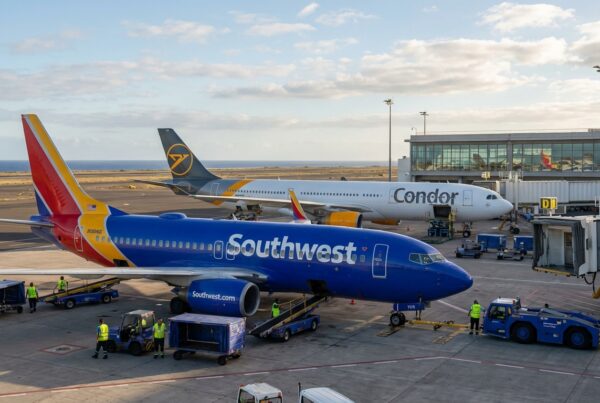A recent incident on board an international flight, reported by FlywestA lithium battery ignited in a piece of hand luggage, prompting a diversion and a controlled evacuation without injury. Beyond the event itself, this situation is a reminder of how important it is for all travellers to understand the risks associated with lithium batteries and best practices for transporting them by air.
What happened on board and why are we worried?
According to information released by FlywestThe fire started in a battery in an overhead compartment, generating flames and dense smoke. The crew applied emergency procedures, used suitable fire extinguishers and carried out an emergency landing. Although there were no injuries, the incident highlights the seriousness of a technical phenomenon known as "thermal runaway", and the difficulties of controlling this type of fire in a confined space such as an aircraft cabin.
Understanding thermal runaway in lithium batteries
A lithium battery can experience thermal runaway when its internal structure is damaged, when a short circuit occurs or when it overheats. This process triggers an exothermic chemical reaction that can release flames and toxic smoke, making the fire particularly difficult to control. Common devices - smartphones, laptops, external batteries - contain lithium-ion cells that can present this risk in the event of shock, manufacturing defect or mishandling.
What do the rules say and how do companies react?
International regulations and airline operational policies impose strict restrictions on the carriage of batteries. In practice, detachable and external batteries are accepted in the cabin, but strictly forbidden in the hold. Manufacturers and carriers require that terminals be protected and devices switched off during boarding. Following a number of recent incidents, many airlines are tightening up their instructions and controls, and airports are fine-tuning their procedures for managing dangerous items in transit.
What every traveller should check before setting off
Before checking in your luggage, check the condition of batteries and equipment. Never carry a battery that is visibly damaged or swollen. Back-up batteries should be kept in hand luggage, with the terminals insulated (e.g. with tape) to prevent accidental contact. Avoid recharging a battery if you notice overheating or an unusual smell. If in doubt, contact your airline's counter for specific instructions in line with its rules.
How do you react in flight if you suspect overheating or a fire?
The first rule is to remain calm and alert the crew immediately. Crew members are trained and equipped to deal with this type of incident: communication with the cockpit, use of extinguishers and, if necessary, isolation of the burning object. Attempting to intervene without training can increase the risks. If you are carrying an external battery, store it in a non-flammable container and report any anomaly to the personnel before boarding.
Prevention and gestures to adopt on the ground
When preparing your trip, make sure your equipment is in good condition and certified. Store batteries in your hand luggage and make sure they are switched off. Don't leave devices plugged in unattended, and avoid using uncertified chargers. If you observe a smoking or smoldering aircraft at the airport, immediately alert ground staff so that they can initiate the appropriate safety procedure.
Impacts on travellers and air transport
A lithium battery incident can lead to diversions, long delays and assistance procedures for passengers. Airlines can apply commercial measures (rerouting, refunds) and reinforce security controls to prevent further incidents. For travelers, the best protection is prevention: follow the instructions for transporting batteries, check with your airline and report any suspicious devices.
Changing practices and expectations
Faced with the proliferation of electronic devices and the growing demand for external batteries, the air transport industry is adapting its practices. Operators are boosting passenger awareness, improving crew training and investing in more effective in-cabin intervention equipment. Authorities and carriers are also working to clarify and harmonize rules in order to reconcile technological innovation and flight safety.
Key information
Recent incident A lithium battery caught fire in a piece of hand luggage, prompting a diversion and an emergency landing, but no injuries were reported. Flywest. Main risk The main problem is thermal runaway, which is difficult to control and emits toxic fumes. Practical rules External batteries and detachable batteries must be carried in the cabin, with terminals protected; they should not be shipped in the hold. Travel recommendations Check the condition of batteries before departure, isolate terminals, avoid damaged equipment, follow company instructions and report any anomalies to staff. In-flight reaction Do not attempt to intervene without training. Collective objective To reinforce prevention to reduce incidents and protect air safety.




